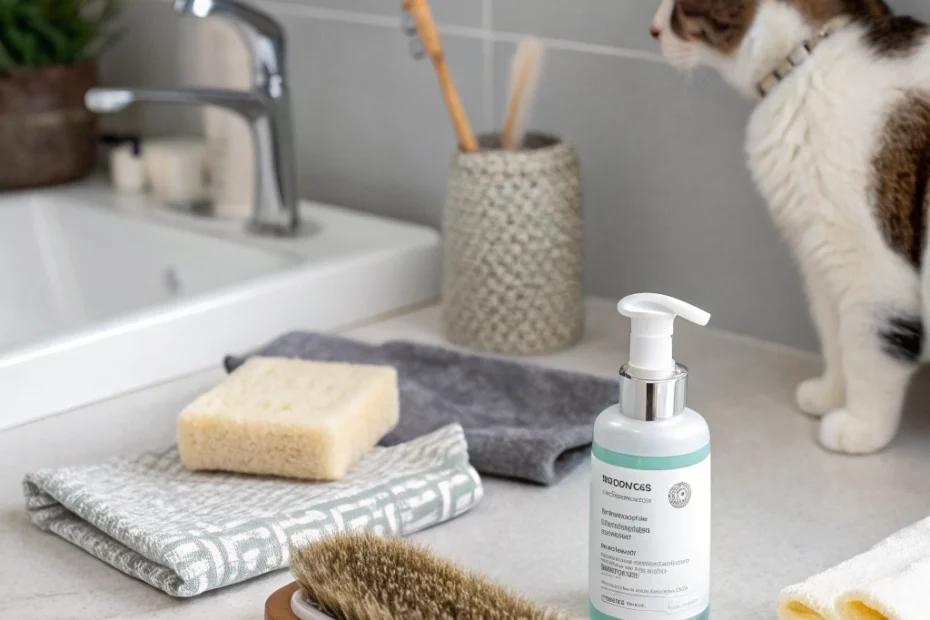At-a-Glance
Scratching is a natural behavior for cats, but it can be frustrating when your furniture becomes their favorite target. Understanding why cats scratch and how to redirect this behavior can help protect your home. This article explores various strategies, including the use of cat furniture, to keep your feline friend happy and your furniture intact.
How to Choose
When selecting cat furniture to deter scratching, consider your cat’s preferences and habits. Look for sturdy options that can withstand vigorous use. Cat trees, scratching posts, and pads are commonly used to provide alternatives to your furniture. Ensure the materials are safe and appealing to your cat, such as sisal or carpet.
Consider Your Cat’s Size
Choose furniture that accommodates your cat’s size. Larger cats may need more robust structures, while smaller cats might prefer compact options.
Material Matters
Opt for materials that are durable and enticing for scratching. Sisal is a popular choice because it mimics the texture of tree bark, which cats naturally enjoy.
Safety & Setup
Ensuring the safety of your cat furniture is crucial. Secure any tall structures to prevent tipping. Regularly inspect for wear and tear to avoid any hazards. Place the furniture in areas your cat frequents to encourage use.
Stability is Key
Make sure that the furniture is stable. Wobbly structures can deter your cat from using them and may pose a risk of injury.
Regular Maintenance
Check for loose threads or damaged areas that could harm your cat. Replace or repair as needed to maintain a safe environment.
Core Pillars
Understanding the core reasons behind scratching can help you manage this behavior. Cats scratch to mark territory, stretch their muscles, and maintain their claws. Providing appropriate outlets for these needs is essential.
Marking Territory
Scratching leaves both a visual mark and a scent mark from glands in their paws. This behavior is instinctual and helps cats feel secure in their environment.
Physical Exercise
Scratching provides a way for cats to stretch and exercise their muscles, which is vital for their physical health.
Placement & Environment Tips
Strategic placement of cat furniture can enhance its appeal. Position scratching posts near favorite resting spots or windows where your cat likes to watch the world. This can make the furniture more attractive than your couch or curtains.
High-Traffic Areas
Place scratching options in areas where your cat spends a lot of time. This increases the likelihood of them using it.
Near Sleeping Areas
Cats often like to stretch and scratch after waking up, so placing a scratching post near their bed can be effective.
Comparison with Alternatives
While cat furniture is a popular choice, there are other methods to consider. Nail caps, deterrent sprays, and regular nail trimming can support your efforts to protect your furniture.
Nail Caps
These are small covers that fit over your cat’s claws, reducing the damage they can do. They need to be replaced regularly but can be a useful tool.
Deterrent Sprays
These sprays can be applied to furniture to make it less appealing to scratch. They are often made with scents that cats dislike.
FAQs
Why do cats scratch furniture? Cats scratch to mark their territory, stretch their muscles, and keep their claws healthy.
How can I stop my cat from scratching my couch? Provide alternative scratching options, use deterrents, and consider cat furniture to redirect their behavior.
Is declawing a good solution? Declawing is not recommended as it can lead to behavioral and health issues. It’s best to explore other humane options.
What to Do Next
Now that you have a better understanding of how to keep cats from scratching furniture, consider evaluating your home for potential improvements. Look into various cat furniture options that may suit your cat’s needs and preferences. Remember, patience and consistency are key in training your cat to use these alternatives.
Disclaimer: Always consult your veterinarian for personalized advice regarding your cat’s health.
